
Articles, videos about Tongkat Ali, Black Ginger, and Butea Superba
Articles, videos about optimal sex
Gluten-free fad diet?
Gluten, which makes up 75 to 85 percent of the protein in wheat, has been part of the human diet for a long time. Some 10,000 years ago, wheat was cultivated in Palestine, enabling mankind to establish the first city, complete with walls, at Jericho.
Agriculture was the first revolution in human history, and wheat conquered the world. In 2020/21, production reached 775.8 million metric tons. China is the world's leading wheat producer. [Sources: Worldwide production of grain in 2020/21, by type and Leading 10 wheat producers worldwide in 2020/2021]
Jericho wasn't quite as successful. The Bible says that the Israelites, led by Joshua, crumbled the walls of the Canaanite city by blowing their trumpets. Parts of the wall are still there, but the city, once Number One, is now just a minor town in the West Bank.
Wheat allergies are nothing new. Aretaeus of Cappadocia (2nd century AD) first named celiac disease: "If the stomach be irretentive of the food and if it pass through undigested and crude, and nothing ascends into the body, we call such persons celiacs."
In 1962, Willem Dicke was headed for the Nobel Prize in Medicine for discovering the ill effects of gluten, but he died before any official announcement, and Nobel Prizes are not giving posthumously (after death).
This misfortune, though, did not stop the gluten-free movement in its tracks. In a survey in 2014, the nonprofit advocacy organization Consumer Reports (established 1936) found that 63% of Americans expected a gluten-free diet to improve their health [Source: Consumer Reports Debunks Common Myths about Gluten]
Like most mainstream media, Consumer Reports had a negative opinion of gluten-free.
For some people, gluten-free is an ideology. They avoid all grains because they are not pre-agricultural. But for many others, gluten-free is based on observation, anecdotal evidence, and self-experimentation. This isn't as rigorous as required for a thesis, but it's still inductive reasoning.
The most likely detrimental effect of a food not being tolerated would be diarrhea. A soft, foul smelling stool is indeed a telltale sign of celiac disease, occurring mostly in children. In modern, urban adults, the condition will ring alarm bells, and they will be quick to eliminate suspected culprits from their diets.
Diarrhea is probably under-reported on social media. Having the shits after eating bread, is something most people won't document on Instagram. They may just mention that they have a gluten intolerance, without going into further details.
However, in fairness to wheat, diarrhea after eating bakery products does not necessarily mean that gluten is the offensive ingredient. While traditional bread is just flour, salt, water, and yeast, and a dough left standing for maybe an hour for the yeast to do its job, modern bakeries speed up the process by substituting good old traditional yeast with all kinds of chemical mixtures.
On the other hand, when some people have digestive issues like bloating and diarrhea after eating bread, even though they do not take any medications, and even though they bake their own loaves of just wheat, salt yeast, and water, that still is not proof they react negatively on gluten.
Reason: bread is not just gluten. Bread also contains some 2 to 3 percent of fructans, a carbohydrate, for which, apart from bread, onions and garlic are the only other two major sources in human nutrition.
Fructans are hard to digest in the human small intestine, not just for a small minority of children, but for everyone, young and old. When fructans (polymers of the simple sugar fructose) reach the large intestine (the colon), they are fermented by gut bacteria and turned into short-chain fatty acids, a nutrient that can still be absorbed in the large intestine, even though absorption mostly happens in the small intestine.
Fermentation produces gas, felt as bloating and emitted as farts, and fermentation also changes the consistency of what is excreted as feces.
Thus, bread may cause diarrhea in people who have no gluten sensitivity at all.
In celiac disease, an inflammatory response by the immune system upon gluten ingestion also causes diarrhea.
Gluten is not a single protein but an aggregate of two proteins: large glutenin molecules with a molecular weight of 2-3 million hydrogen atoms ("daltons", the 12th part of a carbon atom), and the much smaller gliadin molecules with a molecular weight of 28,000 to 55,000. Depending on the condition of a person, gliadins are small enough to pass the spaces (named "tight junctions") between the epithelial (skin) cells of the intestinal wall, and then attach themselves onto or into nearby cells, or even circulate via the bloodstream throughout the body.
In genetically predisposed individuals, certain cells expressing the foreign matter gliadins (among them the enzyme Tissue Transglutaminase, tTG) are attacked by IgA (Immunoglobulin A) antibodies of the body's immune system. "Genetically predisposed" because these individuals carry variants of genes (HLA-DQA1 and HLA-DQB1) which view gliadins as antigens (antibody generators). Other variants of the same genes present in non-predisposed individuals do not understand gliadins as antigens.
The exact role of gliadins in autoimmune diseases (type 1 diabetes, rheumatic arthritis, etc), a variety of further inflammatory conditions, and a wide range of other morbidities (including migraine and back pain) has not yet been elucidated. But hypotheses abound.
Because cytokine storms (sudden excessive inflammation) are a common cause of Covid-19-related deaths, and because gluten is inflammatory for many individuals, a gluten-free diet has been suggested as a preventive measure against Covid-19 [Source: Can a gluten-free diet be partly protective for COVID-19 infection?]
Quote: "More recently, medical experts have begun to acknowledge the possible connection between gluten and non-pathologic joint pain - joint pain that is not explained by disease. A growing body of research supports this idea." [Source: How Gluten Can Cause Joint Pain]
Quote: "A gluten-free diet (GFD) ... has been investigated as a treatment option for other medical conditions, including dermatitis herpetiformis, irritable bowel syndrome, neurologic disorders, rheumatoid arthritis, diabetes mellitus, and HIV-associated enteropathy." [Source: Gluten-Free Diet in Nonceliac Disease]
Some research even blames gluten for migraine headaches.
[Source: How does a piece of bread cause a migraine?]
But when people hear "genetic diseases", they think of the likes of Down Syndrome (named after British physician John Langdon Down who first described it), childhood (insulin dependent) diabetes, or sickle cell disease.
Childhood diabetes is neither congenital nor caused by defect genes. It is an autoimmune disease (the immune system attacking the beta cells of the pancreas' islets of Langerhans that produce insulin). Cause unknown.
On the other hand, sickle cell disease occurs if both parents have defective ß-globin genes, causing red blood cells to be sickle-shaped and thus obstruct the flow in blood vessels. The common perception that with a genetic disease, one's fate as patient is determined, applies to sickle cell disease.
The gene that predisposes for celiac disease, is present in some 30 % of studied populations. [Source: Although 30% of the general population carries a genetic predisposition for CD, only approximately 3% will develop this disease
Certain genes make celiac disease more likely. But eating or not eating gluten is much more relevant. And, as a matter of fact, one can find genetic factors for about every illness.
Here are some more morbidities with strong genetic roots, as defined by MedicineNet.com: "Multifactorial inheritance disorders are caused by a combination of environmental factors and mutations in multiple genes... Examples include heart disease, high blood pressure, Alzheimer's disease, arthritis, diabetes, cancer, and obesity."[Source: 7 common multifactorial genetic inheritance disorders]
The Harvard School of Public Health titled an obesity page: Genes Are Not Destiny]
It's true: not all food items are equally fit for human consumption. You probably do not need gluten. On the other hand, if you intend to embark on a gluten-free life, you better think first about what you will eat instead. Many other food items also come with their particular risks.
Diarrhea is underreported on social media. People are unlikely to post photos or clips of their experience with digestive problems on Facebook or Twitter. They will, however, take drastic measures to avoid embarrassing situations, including going gluten-free when, actually, they should just stay baking powder-free.
References:
Antvorskov, Julie C.; Fundova, Petra; Buschard, Karsten; Funda, David P. (2012), Dietary gluten alters the balance of pro-inflammatory and anti-inflammatory cytokines in T cells of BALB/c mice, Immunology, Wiley Online Library,
https://doi.org/10.1111/imm.12007
Caputo, Ivana; Secondo, Agnese; Lepretti, Marilena; Paolella, Gaetana; Auricchio, Salvatore; Barone, Maria Vittoria; Esposito, Carla (2012),
Gliadin Peptides Induce Tissue Transglutaminase Activation and ER-Stress through Ca2+ Mobilization in Caco-2 Cells. PLoS One, Vol 7(9): e45209,
https://dx.doi.org/10.1371%2Fjournal.pone.0045209
Celiac disease, MedlinePlus, https://medlineplus.gov/genetics/condition/celiac-disease/
Celiac testing, https://celiac.org/about-celiac-disease/screening-and-diagnosis/screening/
Cordain, Loren (2019), Paleo Diet History, News Medical Life Sciences,
https://www.news-medical.net/health/Paleo-Diet-History.aspx
Could a Gluten-Free Diet Improve Your Sex Life? (2018), Best Health, https://www.besthealthmag.ca/article/sex-life-gluten-free/
Dahele, A; Ghosh, S (2001), Vitamin B12 deficiency in untreated celiac disease, American Journal of Gastroenterology, Vol 96(3), Pages 745-50. https://doi.org/10.3390/nu5030771
Debunks Common Myths about Gluten (2014), Consumer Reports,
https://www.consumerreports.org/media-room/press-releases/2014/11/consumer-reports-debunks-common-myths-about-gluten/
Dieterich, W; Ehnis, T; Bauer, M; Donner, P; Volta, U; Riecken, E O; Schuppan, D (1997), Identification of tissue transglutaminase as the autoantigen of celiac disease, National Library of Medicine, Vol 3(7):797-801, https://doi.org/10.1038/nm0797-797
El-Chammas, Khalil MD; Danner, Elaine RD, CD, CNSC (2011), Gluten-Free Diet in Nonceliac Disease, Nutrition in Clinical Practice, https://doi.org/10.1177/0884533611405538
Haupt-Jorgensen, Martin; Buschard, Karsten (2020), Can a gluten-free diet be partly protective for COVID-19 infection? Journal of Pathology, Microbiology and Immunology, https://doi.org/10.1111/apm.13075
Gluten digestion, Dr. Schär Institute, https://www.drschaer.com/us/institute/a/digestion-gluten
Green, Lauren (2019), How does a piece of bread cause a migraine? The Conversation, https://theconversation.com/how-does-a-piece-of-bread-cause-a-migraine-126421
Gutiérrez, Sergio; Pérez-Andrés, Jenifer; Martínez-Blanco, Honorina; Ferrero, Miguel Angel; Vaquero, Luis; Vivas, Santiago; Casqueiro, Javier; Rodríguez-Aparicio, Leandro B. (2017), The human digestive tract has proteases capable of gluten hydrolysis, Molecular Metabolism, Vol 6(7): Pages 693–702. https://dx.doi.org/10.1016%2Fj.molmet.2017.05.008
Howley, Elaine K. (2021), Surprising Signs of Gluten Intolerance, USNews,
https://health.usnews.com/wellness/food/articles/surprising-signs-of-gluten-intolerance
Kimball, John W. (2021), Molecular Weight, Biology LibreTexts, https://bio.libretexts.org/Bookshelves/Introductory_and_General_Biology/Book%3A_Biology_(Kimball)/01%3A_The_Chemical_Basis_of_Life/1.07%3A_Molecular_Weight_and_the_Mole
Mingomataj, Ervin Ç; Gjata, Enkelejda; Bakiri, Alketa; Xhixha, Fatmira; Hyso, Entela; Ibranji, Alkerta (2011), Gliadin allergy manifested with chronic urticaria, headache and amenorrhea, BMJ Case Reports, https://dx.doi.org/10.1136%2Fbcr.10.2011.4907
Molecular Weight Calculator, https://www.lenntech.com/calculators/molecular/molecular-weight-calculator.htm
Molecular weight, National Cancer Institute, https://www.cancer.gov/publications/dictionaries/cancer-terms/def/molecular-weight
Osborne, Migraine Headaches and Gluten Sensitivity – A Strong Connection Gluten Free Society, https://www.glutenfreesociety.org/migraine-headaches-and-gluten-sensitivity-a-strong-connection/
Palmieri, Beniamino; Vadala, Maria; Laurino, Carmen (2019), Gluten-free diet in non-celiac patients: beliefs, truths, advantages and disadvantages, Minerva Gastroenterology Dietology, Vol 65(2):153-162. https://doi.org/10.23736/s1121-421x.18.02519-9
Pomeroy, Christopher (2016), How Gluten Can Cause Joint Pain, Arthritis Health, https://www.arthritis-health.com/types/general/how-gluten-can-cause-joint-pain
Protein digestion and absorption, OpenLearn, https://www.open.edu/openlearn/science-maths-technology/biology/nutrition-proteins/content-section-1.7
Protein Digestion and Absorption, Open Oregon, https://openoregon.pressbooks.pub/nutritionscience/chapter/6d-protein-digestion-absorption/
Sala, Maura (2021), The Walls of Jericho, Bible Odyssey, https://www.bibleodyssey.org/en/places/related-articles/walls-of-jericho
Sharma, Natasha; Bhatia, Simran; Chunduri, Venkatesh; Kaur, Satveer; Sharma, Saloni; Kapoor, Payal; Kumari; Garg, Anita (2020), Pathogenesis of Celiac Disease and Other Gluten Related Disorders in Wheat and Strategies for Mitigating Them, Frontiers in Nutrition, Vol. 7: 6. https://dx.doi.org/10.3389%2Ffnut.2020.00006
Smyth, Megan Ciara (2017), Intestinal permeability and autoimmune diseases, Bioscience Horizons: The International Journal of Student Research, Volume 10, 2017, https://doi.org/10.1093/biohorizons/hzx015
Soares, Fabíola Lacerda Pires; Matoso, Rafaelde Oliveira; Teixeira, Lílian Gonçalves; Menezes, Zélia; Pereira, Solange Silveira; Alves, Andréa Catão; Batista, Nathália Vieira; Caetanode Faria, Ana Maria; Cara, Carmona Denise; Ferreira, Versiani Matos Adaliene; Alvarez-Leite, Jacqueline Isaura (2013), Gluten-free diet reduces adiposity, inflammation and insulin resistance associated with the induction of PPAR-alpha and PPAR-gamma expression, The Journal of Nutritional Biochemistry, Volume 24, Issue 6, June 2013, Pages 1105-1111. https://doi.org/10.1016/j.jnutbio.2012.08.009
Thompson, T (2001), Wheat starch, gliadin, and the gluten-free diet, Journal of American Dietetic Association Vol 101(12), Pages: 1456-9. https://doi.org/10.1016/s0002-8223(01)00351-0
Urade, Reiko; Sato, Nobuhiro; Sugiyama, Masaaki (2018) Gliadins from wheat grain: an overview, from primary structure to nanostructures of aggregates. Biophysical Reviews, Vol 10(2), Pages 435–443. https://dx.doi.org/10.1007%2Fs12551-017-0367-2
Wang, Zhaojun; Li, Yiwen; Yang, Yushuang; Liu, Xin; Qin, Huanju; Dong, Zhenying; Zheng, Shuhai; Zhang, Kunpu; Wang, Daowen (2017), New insight into the function of wheat glutenin proteins as investigated with two series of genetic mutants, Scientific Reports, https://www.nature.com/articles/s41598-017-03393-6
Why we get diarrhea (2017), Brigham and Women's Hospital, https://www.sciencedaily.com/releases/2017/06/170614121040.htm
Wieser, Herbert (2007), Chemistry of gluten proteins, National Library of Science, https://doi.org/10.1016/j.fm.2006.07.004
The great gluten-free diet fad (2015), BBC, https://www.bbc.com/news/magazine-33486177
By tongkatali.org
tongkataliorg3@gmail.com
Updated March 20, 2023






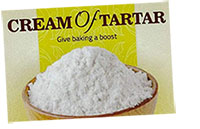
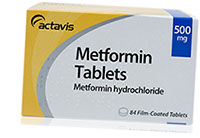
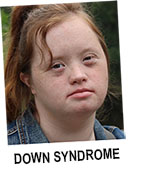
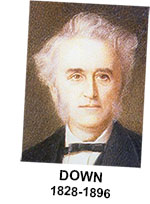
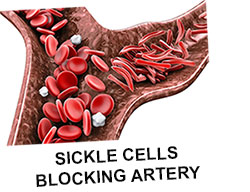

Addendum:
